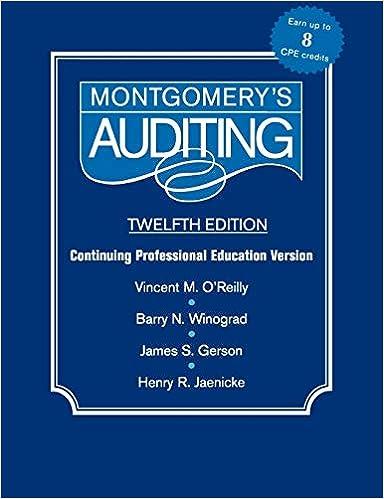Question
41. A company sells 1 million shares of common stock with no par value for $15 a share. In recording the transaction, it would debit:
| 41. | A company sells 1 million shares of common stock with no par value for $15 a share. In recording the transaction, it would debit:
|
| 42. | Melrose Inc. buys back 300,000 shares of its stock from investors at $6.50 a share. Two years later, it reissues this stock for $6.00 a share. The stock reissue would be recorded with a debit to Cash for:
|
| 43. | Which of the following statements about when cash dividends can be paid is not correct?
|
| 44. | Which of the following statements is correct?
|
| 45. | When does a corporation record an increase in Dividends Payable?
|
| 46. | A dividend date of record is the date on which the corporation:
|
Step by Step Solution
There are 3 Steps involved in it
Step: 1

Get Instant Access to Expert-Tailored Solutions
See step-by-step solutions with expert insights and AI powered tools for academic success
Step: 2

Step: 3

Ace Your Homework with AI
Get the answers you need in no time with our AI-driven, step-by-step assistance
Get Started


